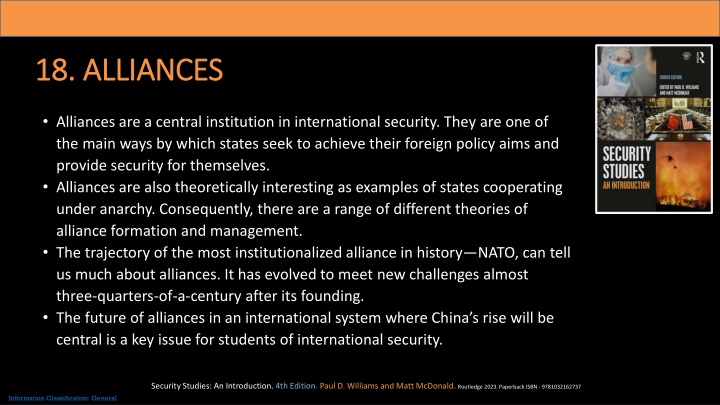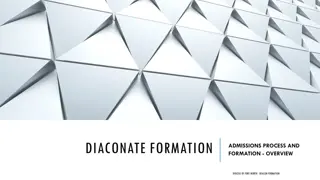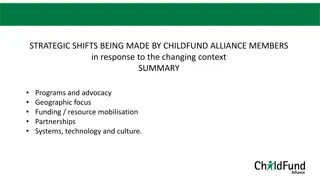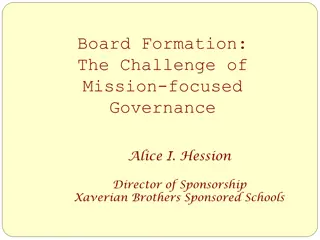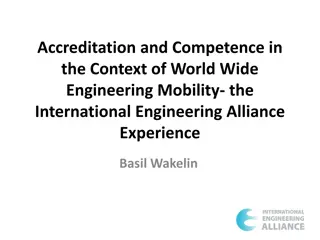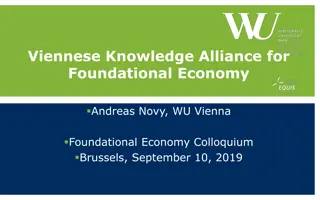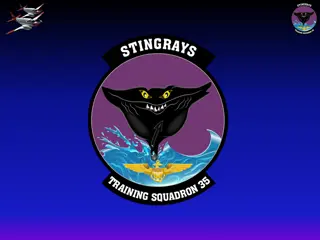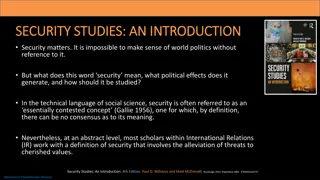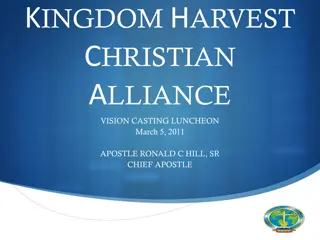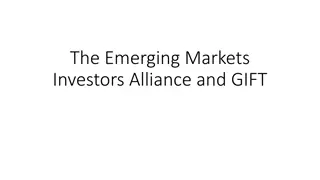Alliance Formation and Management in International Security
Alliances play a crucial role in the realm of international security, serving as a means for states to pursue foreign policy objectives and ensure their safety. Understanding the various definitions, historical evolution, and implications of alliances sheds light on their significance in contemporary geopolitics. The complexity of alliance dynamics, as exemplified by NATO's trajectory, underscores the intricacies involved in maintaining such partnerships amidst shifting global power dynamics.
Download Presentation

Please find below an Image/Link to download the presentation.
The content on the website is provided AS IS for your information and personal use only. It may not be sold, licensed, or shared on other websites without obtaining consent from the author.If you encounter any issues during the download, it is possible that the publisher has removed the file from their server.
You are allowed to download the files provided on this website for personal or commercial use, subject to the condition that they are used lawfully. All files are the property of their respective owners.
The content on the website is provided AS IS for your information and personal use only. It may not be sold, licensed, or shared on other websites without obtaining consent from the author.
E N D
Presentation Transcript
18. ALLIANCES 18. ALLIANCES Alliances are a central institution in international security. They are one of the main ways by which states seek to achieve their foreign policy aims and provide security for themselves. Alliances are also theoretically interesting as examples of states cooperating under anarchy. Consequently, there are a range of different theories of alliance formation and management. The trajectory of the most institutionalized alliance in history NATO, can tell us much about alliances. It has evolved to meet new challenges almost three-quarters-of-a-century after its founding. The future of alliances in an international system where China s rise will be central is a key issue for students of international security. Security Studies: An Introduction. 4th Edition. Paul D. Williams and Matt McDonald. Routledge 2023. Paperback ISBN - 9781032162737 Information Classification: General
WHAT IS AN ALLIANCE? WHAT IS AN ALLIANCE? Prior to World War II the term was used almost exclusively to refer to formal pacts of mutual military assistance among states. Starting in the mid-20thcentury, however, the term was applied to different types of security communities, such as collective security arrangements. More recently, the term encompasses other kinds of international partnerships, including beyond security issues, further contributing to popular confusion over the meaning of an alliance. In compiling the Alliance Treaty Obligations and Provisions (ATOP) dataset, Leeds et al. (2002) chose to include any written agreement signed by official representatives from at least two independent states that contained any kind of military promise, including promises to remain neutral. One benefit of adopting a more expansive coding protocol is that it better encapsulates the often-complicated reality of modern international security commitments, which stricter definitions may overlook. However, overly broad classification schemes risk subsuming more than they reveal by conflating different kinds of security relationships. Security Studies: An Introduction. 4th Edition. Paul D. Williams and Matt McDonald. Routledge 2023. Paperback ISBN - 9781032162737 Information Classification: General
DEFINING ALLIANCES: POPULAR DEFINITIONS DEFINING ALLIANCES: POPULAR DEFINITIONS Source Definition Walt (1987: 1) a formal or informal relationship of security cooperation between two or more sovereign states . Pressman (2008: 5) a relationship between two or more states based on shared interest, an exchange of benefits, security cooperation, specific written agreements, and/or an expectation of continuing ties . Holsti, Hopmann and Sullivan (1973: 4) a formal agreement between two or more nations to collaborate on national security issues . Russett (1971: 262) a formal agreement among a limited number of countries concerning the conditions under which they will or will not employ military force . Snyder (1997: 4) formal associations of states for the use (or nonuse) of military force . Weitsman (2004: 27) bilateral or multilateral agreements to provide some element of security to the signatories . Security Studies: An Introduction. 4th Edition. Paul D. Williams and Matt McDonald. Routledge 2023. Paperback ISBN - 9781032162737 Information Classification: General
WHY JOIN AN ALLIANCE? WHY JOIN AN ALLIANCE? The most common argument for joining or forming an alliance is a utilitarian one: states join alliances because they perceive their interests are served by doing so. But where do these interests come from? Balance of power? For Waltz (1979), states balance against others through alliances to enhance their security. They might also bandwagon with other states through alliances to join the stronger side. Balance of threat? For Walt (1987), states ally in response to perceived threats rather than just capabilities. For reasons beyond realist concerns? Transnational ideologies, domestic political considerations, economic considerations, keeping the peace among adversaries and controlling certain states, or reputational benefits may all be important. Security Studies: An Introduction. 4th Edition. Paul D. Williams and Matt McDonald. Routledge 2023. Paperback ISBN - 9781032162737 Information Classification: General
ALLIANCE MANAGEMENT ALLIANCE MANAGEMENT There is a smaller literature on alliance management: what are they for, how are they managed, and how do their internal dynamics play out? For some analysts, deterrence is the central aim of alliances. For others, alliances are more likely to lead to armed conflict than sustain peace. There is also contestation among researchers over whether joining an alliance increases the power (and security) of members. Security Studies: An Introduction. 4th Edition. Paul D. Williams and Matt McDonald. Routledge 2023. Paperback ISBN - 9781032162737 Information Classification: General
INTRA INTRA- -ALLIANCE DYNAMICS ALLIANCE DYNAMICS In terms of internal cohesion, some researchers argue that institutional dynamics are central to explaining the endurance of alliances. Others point to the role of a recognized external threat in keeping an alliance together. For realists this is central, and the loss of that external enemy can mean the collapse of the alliance. This explains arguments from prominent realists that NATO would disintegrate after the collapse of the USSR. Another view suggests that the regime type of members is crucial, with alliances made up of democracies more likely to be durable. Security Studies: An Introduction. 4th Edition. Paul D. Williams and Matt McDonald. Routledge 2023. Paperback ISBN - 9781032162737 Information Classification: General
CASE STUDY OF NATO: ORIGINS AND CASE STUDY OF NATO: ORIGINS AND EVOLUTION EVOLUTION The North Atlantic Treaty Organization (NATO) was established in 1949. The origins of the idea came from the British, who wanted to sustain peace in Europe after WWII. They were joined initially by France, the US, Belgium, Netherlands and Luxembourg. The US thought a defensive treaty would help safeguard Europe from Soviet pressure, along with the massive US economic investment of its Marshall Plan. Its original aim, as apocryphally attributed to its First Secretary-General, was focused on Europe: to keep the Russians out, the Americans in, and the Germans down . Soviet annexation of Eastern Europe and the Korean War both served to reaffirm the importance of an institution like NATO to serve Western interests and defend Western Europe from a revisionist USSR. The USSR s development of a nuclear weapon in 1949 also served to underscore a role for the alliance, especially as an extended nuclear deterrent from the United States in protecting Western Europe. Security Studies: An Introduction. 4th Edition. Paul D. Williams and Matt McDonald. Routledge 2023. Paperback ISBN - 9781032162737 Information Classification: General
NATOS GROWTH IN THE POST NATO S GROWTH IN THE POST- -COLD WAR WORLD WORLD What Explains NATO s Post-Cold War Endurance COLD WAR It continued to meet its members needs. While the Cold War changed some of these needs, new ambitions were realized through NATO. The role of bureaucratic and organizational politics within the alliance, with bureaucratic reorganization assisting strategic adaptation. The role of key bureaucratic officials at particular times, especially NATO s Secretary-General in the immediate post-Cold War era, Manfred Woerner. Political ideology, specifically, NATO s strength as a democracy of alliances, with consensus and cooperation allowing it to endure. Member interests and preferences, especially those of the United States and its recognition of the utility of NATO in furthering US interests. Security Studies: An Introduction. 4th Edition. Paul D. Williams and Matt McDonald. Routledge 2023. Paperback ISBN - 9781032162737 Information Classification: General
CONCLUSIONS CONCLUSIONS There is much we still do know about the effects of alliances on the international system, but we have a better understanding of how alliances function in both peacetime and war. One outstanding question is how the continued rise of China will shape the theory and practice of alliances. Will unaligned smaller regional powers respond by balancing or bandwagoning? Or will they attempt other strategies like hedging? Already, new regional partnerships like the Quadrilateral Security Dialogue, or Quad for short, are taking shape. How will the creation of new defence agreements like the security pact between Australia, the United Kingdom, and the United States (AUKUS) affect existing alliance relationships, both inside and outside the region? Will these new international institutions follow NATO s path and adapt as circumstances warrant, or will they cease to exist as the conditions that led to their creation disappear? These are just some of the questions that future alliance scholars will need to grapple with. Security Studies: An Introduction. 4th Edition. Paul D. Williams and Matt McDonald. Routledge 2023. Paperback ISBN - 9781032162737 Information Classification: General
ESSAY / EXAM QUESTIONS ESSAY / EXAM QUESTIONS How should the term alliance be defined? What are the strengths and weaknesses of potential alternative definitions? What is the best explanation of alliance formation? How is it better than the main alternative theories? What opportunities and limitations face states when it comes to the management of alliances? Are alliances more like to deter war or generate armed conflict? What factors and processes may promote alliance persistence? What are the main elements of continuity and change in the NATO alliance since the end of the Cold War? How can we best explain NATO s persistence since the end of the Cold War? Why might we have expected NATO not to last? What does alliance theory predict about the future of NATO? What explains Sweden and Finland s stated desire to join NATO? Security Studies: An Introduction. 4th Edition. Paul D. Williams and Matt McDonald. Routledge 2023. Paperback ISBN - 9781032162737 Information Classification: General
WEBSITES AND AUDIO WEBSITES AND AUDIO- -VISUAL RESOURCES VISUAL RESOURCES Alliance Datasets Correlates of War Project: Formal Alliances (v.4.1) http://www.correlatesofwar.org/data-sets/formal- alliances The Alliance Treaty Obligations and Provisions Project (ATOPS) http://atop.rice.edu/ Films and Videos: Waterloo (1970) https://www.youtube.com/watch?v=3DcWJrzK0wU The Longest Day (1962) https://www.youtube.com/watch?v=3KdNUlLzTvA A Bridge Too Far (1977) https://www.youtube.com/watch?v=AWL184ZcSxA Europe Prior to World War I: Alliances and Enemies I PRELUDE TO WW1 (2014) https://www.youtube.com/watch?v=f11CKYB2FCA NATO Websites: North Atlantic Treaty Organization www.nato.int U.S. Mission to NATO https://nato.usmission.gov/ Alliances and War: from the Delian League to the First World War (2021) https://www.youtube.com/watch?v=CxMuaLmqAsA The Atlantic Alliance (1980s) https://www.youtube.com/watch?v=oqRGe1Rne5A Truman (1995) https://www.youtube.com/watch?v=PKR4n0_YR7A Alliance for Peace (1951) https://www.youtube.com/watch?v=jqj-DtrBMFE Why NATO was Created (US Army documentary) (1958) https://www.youtube.com/watch?v=y6z-iwGvKcw The Role of NATO in a Post-Cold War Society (2016) https://www.youtube.com/watch?v=oqRGe1Rne5A How Finland and Sweden Would Transform NATO s military capabilities (WSJ) https://www.youtube.com/watch?v=0EBf4dwvcVk NATO s YouTube Channel https://www.youtube.com/user/NATOCOMMUNITY Security Studies: An Introduction. 4th Edition. Paul D. Williams and Matt McDonald. Routledge 2023. Paperback ISBN - 9781032162737 Information Classification: General
